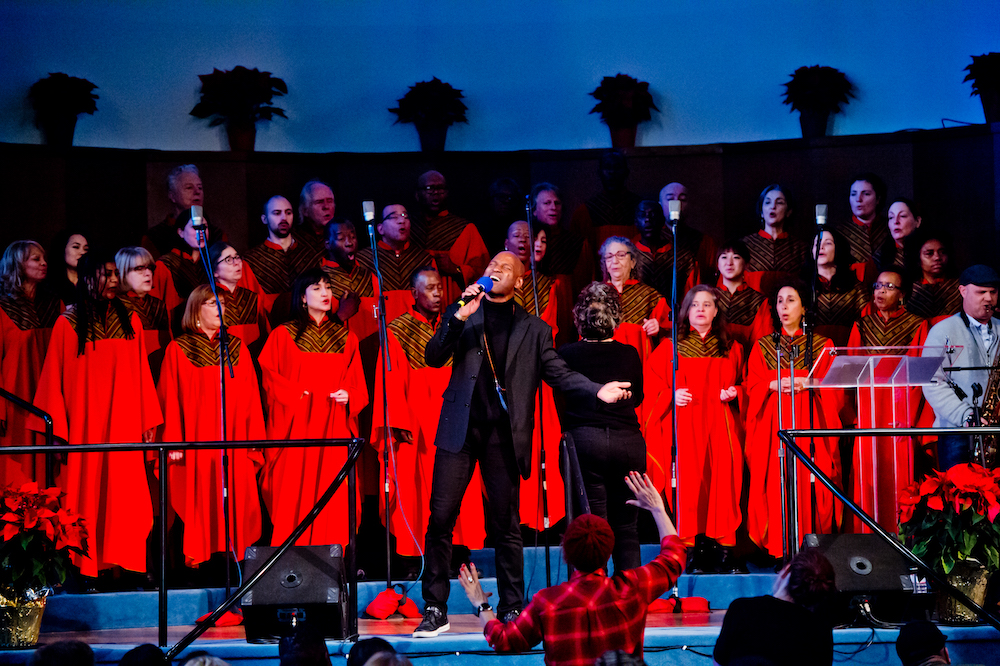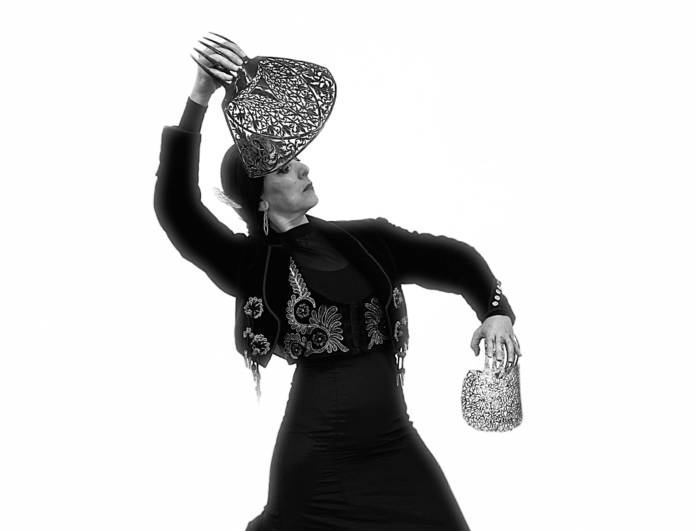Since taking the helm of Theatre Flamenco in 2008, artistic director, choreographer, and dancer Carola Zertuche has made it her mission to take the traditional Spanish dance form in bold new directions.
She does this by alternating her more traditional flamenco performances with unexpected genre-fusing works, which meld flamenco with modern dance, electronic music, or light installments.
For Theatre Flamenco’s latest show, Soul y Alma, the city’s oldest dance company after the San Francisco Ballet is adding African American gospel music to the mix. The collaboration between Theatre Flamenco and The Glide Ensemble, also featuring award-winning visiting flamenco artists Cristina Hall and Eduardo Guerrero premieres Sat/1 at Herbst Theatre.
I spoke to Zertuche about uniting two of The City’s landmark cultural institutions (both of which rose up during the ‘60s civil rights movement to instill their respective communities with cultural pride) for the genre-defying new show, the many similarities between gospel and flamenco arts, and the power of “integrating other cultures into your own.”
48 HILLS Why did you choose Soul y Alma as the title of the show?
CAROLA ZERTUCHE Alma means soul in Spanish, and this year we’re seeking inspiration from gospel music—so it just made sense. Also, Alma is a word that comes up again and again in flamenco lyrics, given many songs deal with spirituality and the capacity of art to fortify the soul.
48 HILLS How did the collaboration between Theatre Flamenco and the gospel chorus of Glide Memorial, come about?
CAROLA ZERTUCHE At Theatre Flamenco, we often mix some untraditional elements into flamenco — be it modern dancing, finishing a show with a cumbia number, or having live digital light displays onstage while we dance.
I went to a Sunday service at Glide for the first time in 2016, and it planted a seed of perhaps collaborating with the choir someday. When I was brainstorming for this year’s home season, I approached Vernon Bush, the director of the Glide Memorial gospel choir, with my idea and he agreed. I asked if seven or eight singers could maybe join us, and they called back with the verdict after talking to the choir: 30 singers wanted to participate. So we have something really special planned for our audience.
48 HILLS You’ve said that you draw inspiration from African American gospel music? How so?
CAROLA ZERTUCHE With this show, we wanted two very deep artistic traditions to pair up and see how they might meaningfully interact. Gospel music grows out of the African American experience in the United States—finding transcendence and maybe even release from the obstacles they have long faced through music and spirituality.
Flamenco comes from a whole mix of cultures in Southern Spain, but largely from the Gitano, or gypsy, culture, which was always brushed to society’s margins, and many flamenco lyrics deal with themes of poverty and pain. These are obviously two very different cultural backdrops and experiences, but it seemed to me there might be an interesting confluence between these two forms.
48 HILLS What are the similarities between the gospel and flamenco arts?
CAROLA ZERTUCHE Both use percussive body elements like stomping and clapping and invite spontaneous responses from the audience. Both use some elements of call and response. The songs evoke spiritual themes and range in theme from reckoning with life’s hardest parts to unbounded joy. Both art forms were created in response to difficult experiences.
The Roma gypsies in Spain lived on the margins of Spanish society; they were discriminated against and very poor. Flamenco began with singing, and then added in guitar, and then later dance. It was a form of finding joy — one that didn’t cost much — and that bound the people together through a shared artistic experience. The whole community would join in the songs and knew the basic steps.

48 HILLS We live at a time when people are admonishing others to stay in their own cultural lanes, yet you are bridging two cultural traditions in this show. Talk to me about that.
CAROLA ZERTUCHE I am the opposite. For me, art is about freedom. Learning from and integrating other cultures into your own experience only enriches you more. For me, it is inspiring to delve into other traditions without losing your own identity.
The thought of “staying in your own lane” simply doesn’t reflect the reality of the world, or of art, which has always borrowed from the influences around it. Otherwise, culture would simply calcify and stagnate.
In San Francisco, our version of flamenco is going to look a bit different than in Andalucia. There’s always been a tension in flamenco between purity and adaptation and I’m definitely in the camp of saying art should have porous borders. Of course, you want to do this sort of artistic bridging with respect, so I invited gospel musicians to collaborate and create something new together.
48 HILLS Why is it important to preserve the art of flamenco?
CAROLA ZERTUCHE In 2010, flamenco was placed on UNESCO’s Lists of Intangible Cultural Heritage. I don’t want flamenco to be relegated to the status of a historical plaque. It is a beautiful gift of culture that is preserved by practicing it — and that I teach in my studio on South Van Ness to a new generation of aficionados who have come here from all over.
48 HILLS What are the challenges of running an arts organization in San Francisco in 2020? And what more can we expect from Theatre Flamenco in the coming year?
CAROLA ZERTUCHE San Francisco has become very expensive and very difficult for artists to survive in. I feel there should be more support for the arts in the city because a city without art is a city without life. This is another part of why I wanted to bring in GLIDE this year. We’re two San Francisco cultural organizations that have not just survived but also thrived in our quickly gentrifying city.
In the coming year, I will continue teaching and performing flamenco at our local studio in the Mission District and will be creating a new home season with a theme to be determined.
SOUL Y ALMA
Sat/1, 8pm, $25-$55
Herbst Theatre, SF.
More info here.





